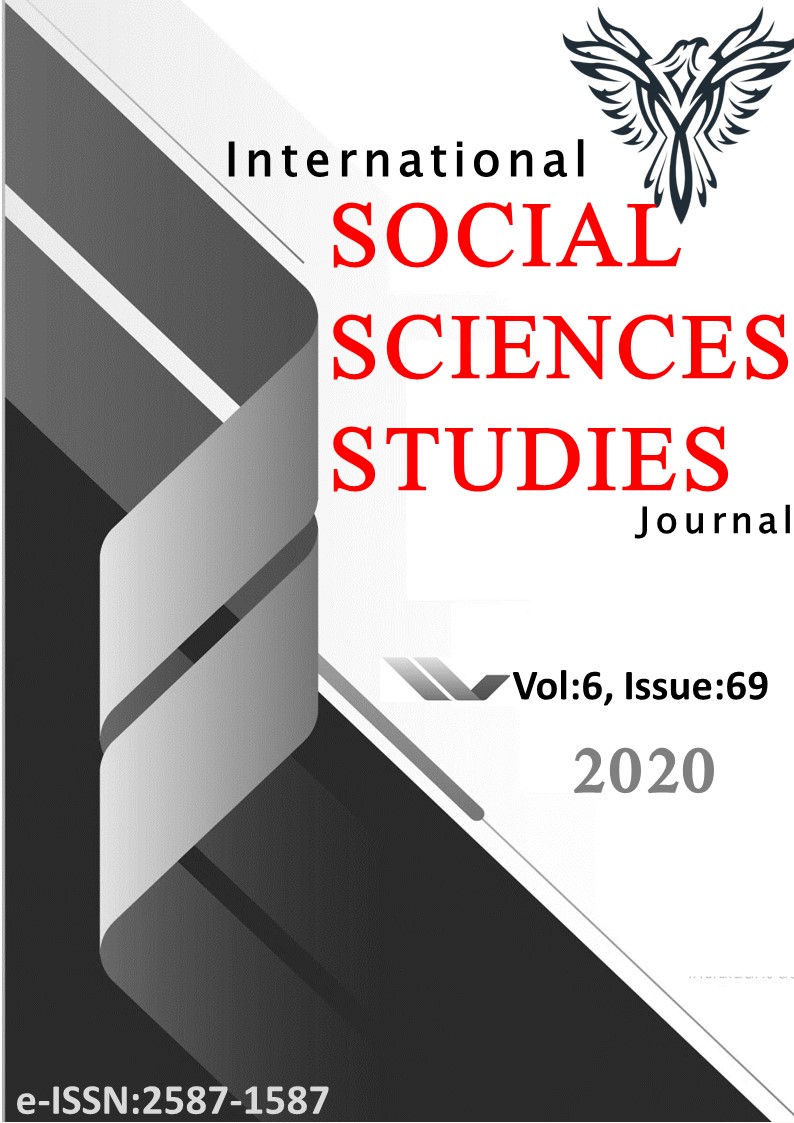Author :
Abstract
Çalışma, kimyasal bağlar konusunda öğrencilerin sahip olduğu kavram yanılgılarını tespit etmek ve bu kavram yanılgılarının giderilmesine yönelik öneriler sunmak amacıyla yapılmıştır. Kimyasal bağlar konusu fen bilgisi müfredatında öğretilen temel konulardan biridir. Bu yüzden bu konu ilerleyen yıllarda öğrencilere genişletilerek tekrar verilmektedir. Organik kimyadan reaksiyonlara, analitik kimyadan spekstroskopiye varıncaya kadar bir çok konunun temelini oluşturmaktadır. Bu yüzden öğrencilerin sahip olduğu kavram yanılgılarını tespit etmek ve gidermeye çalışmak büyük önem taşımaktadır. Bu amaçla 10 maddelik bir test geliştirilmiştir. Öncelikle 50 sekizinci sınıf öğrencisine pilot uygulama yapılmış sonrasında 2016-2017 eğitim öğretim yılında Erzincan Merkez’de beş okulda sekizinci sınıf okuyan 447 öğrenciye uygulanmıştır. Sonuçlar nicel veri analizi kullanılarak merkezi dağılım ölçülerine göre analiz edilmiştir. Çalışma sonuçlarına göre öğrencilerin kavramsal bağların yapısını anlamada zorlandıkları ve bu konuda kavram yanılgısına sahip oldukları bulunmuştur. Ayrıca öğrencilerin iyonik ve kovalent bağlar ve ametal ve metallerin sınıflandırılması konusunda kavram yanılgısına sahip oldukları tespit edilmiştir.
Keywords
Abstract
The purpose of the study is to determine misconceptions and make suggestions on elimination misconceptions about chemical bonds. These concepts are some of the most basic, fundamental concepts taught in the science education curriculum. Therefore, these concepts are given to students again in the following years. This is because, from organic chemistry to reactions, from analytical chemistry to spectroscopy, it forms the basis of many subjects. Therefore, it is dramatically important to identify and try to eliminate the misconceptions students have. For this purpose A test consisting of 10 items was developed. Firstly, 50 eighth-grade students were piloted and then applied to 447 eight-grade students studying at 5 schools in Erzincan Center in 2016-2017 academic year. Results were analyzed according to the measures of central dispersion by using quantitative data analysis. According to the results of the study, it was found that the students had difficulty in understanding the structure of conceptual relations and had a misconception about this topic. In addition, it was determined that students have misconceptions about ionic and covalent bonds and classifications of nonmetals and metals.
Keywords
- Kardaş, F. & Tosun Okatan, T. (2020). “Ortaokul Öğrencilerinin Kimyasal Bağlar Konusunda Sahip Oldukları Kavram Yanılgıları”
- International Social Sciences Studies Journal, (e-ISSN:2587-1587) Vol:6, Issue: 69; pp:4041-4049 ORTAOKUL ÖĞRENCİLERİNİN KİMYASAL BAĞLAR KONUSUNDA SAHİP OLDUKLARI KAVRAM YANILGILARI Secondary School Students’ Misconceptions About Chemical Bonds Doç. Dr.Faruk KARDAŞ Erzincan Binali Yıldırım Üniversitesi Matematik ve Fen Bilimleri Eğitimi Anabilim Dalı Öğretim Üyesi Erzincan/TÜRKİYE Tansu TOSUN OKATAN Erzincan Binali Yıldırım Üniversitesi Matematik ve Fen Bilimleri Eğitimi Anabilim Dalı Yüksek Lisans Öğrencisi Erzincan/TÜRKİYE ÖZET Çalışma, kimyasal bağlar konusunda öğrencilerin sahip olduğu kavram yanılgılarını tespit etmek ve bu kavram yanılgılarının giderilmesine yönelik öneriler sunmak amacıyla yapılmıştır. Kimyasal bağlar konusu fen bilgisi müfredatında öğretilen temel konulardan biridir. Bu yüzden bu konu ilerleyen yıllarda öğrencilere genişletilerek tekrar verilmektedir. Organik kimyadan reaksiyonlara, analitik kimyadan spekstroskopiye varıncaya kadar bir çok konunun temelini oluşturmaktadır. Bu yüzden öğrencilerin sahip olduğu kavram yanılgılarını tespit etmek ve gidermeye çalışmak büyük önem taşımaktadır. Bu amaçla 10 maddelik bir test geliştirilmiştir. Öncelikle 50 sekizinci sınıf öğrencisine pilot uygulama yapılmış sonrasında 2016-2017 eğitim öğretim yılında Erzincan Merkez’de beş okulda sekizinci sınıf okuyan 447 öğrenciye uygulanmıştır. Sonuçlar nicel veri analizi kullanılarak merkezi dağılım ölçülerine göre analiz edilmiştir. Çalışma sonuçlarına göre öğrencilerin kavramsal bağların yapısını anlamada zorlandıkları ve bu konuda kavram yanılgısına sahip oldukları bulunmuştur. Ayrıca öğrencilerin iyonik ve kovalent bağlar ve ametal ve metallerin sınıflandırılması konusunda kavram yanılgısına sahip oldukları tespit edilmiştir. Anahtar Kelimeler: Fen bilgisi, İlköğretim, Kavram yanılgıları, Kimyasal bağlar





